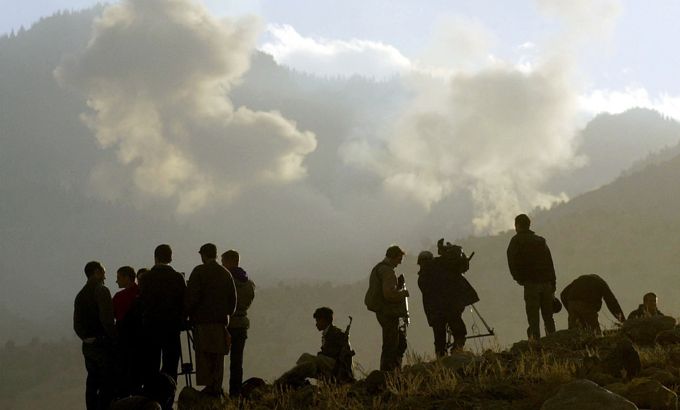
Reporting the Afghan war
The Listening Post looks at the pros and cons of embedded journalism.
This week on The Listening Post – reporting the Afghan war: Time magazine’s shocking cover story walks the thin line between editorial and editorialising. And we lay out the pros and the cons of embedded journalism coming to us from the battlefields of Afghanistan.
It was a horrifying picture and a stark headline that ran on the front cover of Time magazine. An 18-year-old Afghan woman – whose face had been brutally mutilated – dominated the frame and alongside the picture ran the strap ‘What Happens if We Leave’.
Keep reading
list of 4 itemsUK returns looted Ghana artefacts on loan after 150 years
Fire engulfs iconic stock exchange building in Denmark’s Copenhagen
Inside the pressures facing Quebec’s billion-dollar maple syrup industry
The cover sparked controversy as soon as the magazine hit the news stands – the ethics of running the picture, the glaring inaccuracy of the headline, and then the revelation that the lead correspondent had ties to the war effort, made for a debate that would not stop escalating.
The flames were fanned by Time magazine’s editor Rick Stengel who did a media mini-blitz, explaining the magazine’s logic in running the story with the explosive front cover as they did.
His claims that Time was a magazine that ‘answered questions’ and ‘weighed in with a strong view point’ clashed with the magazine’s own defence of its correspondent. The non-disclosure of her links to the reconstruction of Afghanistan was justified by the fact that she had written ‘a straight’ news story.
In our News Divide this week we look behind the shocking cover image and headline and analyse the increasingly loud and powerful role the media plays in shaping the discourse around the Afghan war.
Our feature story this week shines the spotlight on embedded journalism in Afghanistan. Embedding – pairing news reporters with military units on the battlefield – is not new, but in the course of the Iraq and Afghan wars, it has become ever more important both to the militaries fighting the war and the correspondents attempting to cover it.
For the soldiers on the ground, embedding gives them a measure of control over the media message and for news organisations and reporters, the trade-off between some of their editorial independence and access to the frontlines is one that is becoming ever more viable as security concerns become greater and financial constraints tighter.
The Listening Post’s Meenakshi Ravi reports this week on embeds, the advantages, the pitfalls and the journalists who take issue with this kind of reporting.
Quick hits from the media world: The suspicious case of a rape charge that was slapped on Wikileaks frontman Julian Assange and then taken right back; elections in South America; and the Venezuelan press has been banned from publishing any photos of violent crime.
Mark Fiore is without a doubt one of our favourite satirists. His animations cut right to the core of an issue, and this one – which we have used as our Video of the Week– is no exception. The Ground Zero mosque debate has been consuming the American media in recent weeks. We do not know if it is just us, but young ‘Dogboy’ seems to make a lot more sense than most of the commentators on the American airwaves. We hope you enjoy the show.
This episode of The Listening Post aired from Friday, August 27, 2010.